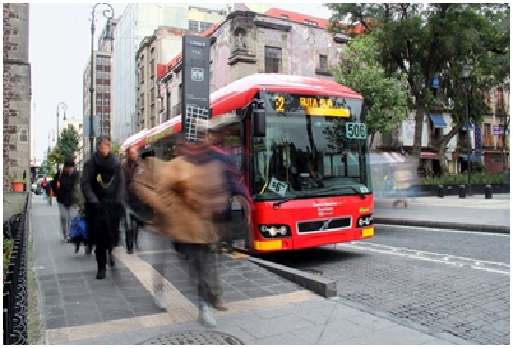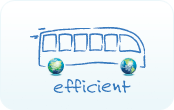|
Home  News News
Sustainable public transport saves lives
 |
05 December 2013 – Traffic crashes currently claim more than 1.2 million lives every year, according to the World Health Organization (WHO), and that number is increasing, particularly in low and middle-income countries.
However, a new publication from transport researchers at EMBARQ highlights the benefits of sustainable public transport, such as buses and most notably Bus Rapid Transit (BRT) systems, in improving traffic safety and saving lives.
The report takes examples from the United States, Latin America, Europe and South Asia, and provides evidence that investments in projects that improve infrastructure through high-quality mass transport systems, such as BRT, can have a positive impact on traffic safety.
|
|
The TransMilenio BRT system in Bogotá, Colombia, is an excellent example that is often praised as an innovative model for mass transport – with the first TransMilenio corridor on Avenida Caracas playing a significant role in improving traffic safety. Findings show that the BRT system has contributed to an estimated 50% reduction in traffic fatalities on the avenue, helping avoid more than 200 traffic deaths during its first nine years of operation.
TransMilenio is not the only BRT system to dramatically improve traffic safety. BRT and other transit priority projects in Guadalajara and Mexico City (Mexico), Ahmedabad (India) and Melbourne (Australia) have similarly curbed traffic crashes and fatalities, while improving transport quality in their respective cities. The improved safety record is mainly due to the changes in street infrastructure typically needed to accommodate a BRT system—such as creating a central median, making crosswalks shorter, and reducing the number of mixed traffic lanes—all of which tend to contribute to fewer crashes.
The report also cites figures from other studies that highlight public transport – such as by bus – as the safest mode of urban travel, with a much lower fatality rate than automobiles, both for vehicle occupants and other road users.
In addition to reducing traffic crashes and saving lives, bus travel, notably BRT, is well-documented for its impacts on reducing Greenhouse Gas Emissions and improving travel times, local air quality and accessibility. When it comes to return on investment, Bus Rapid Transit is the mobility hit for Smart Cities.
Read more
|
|














